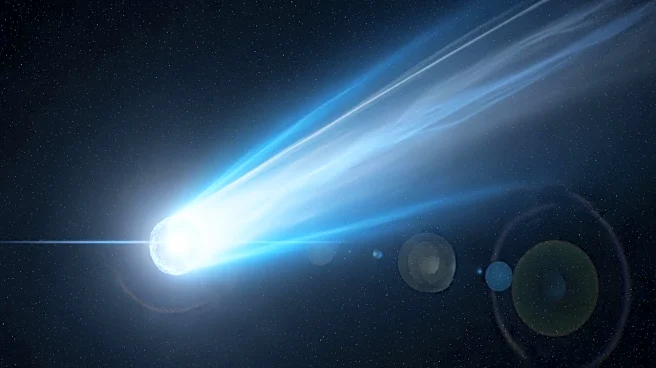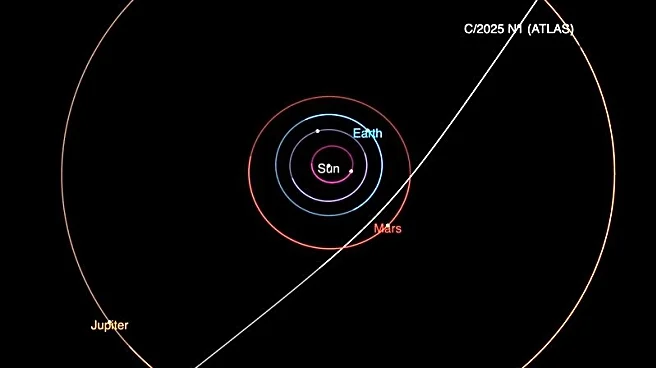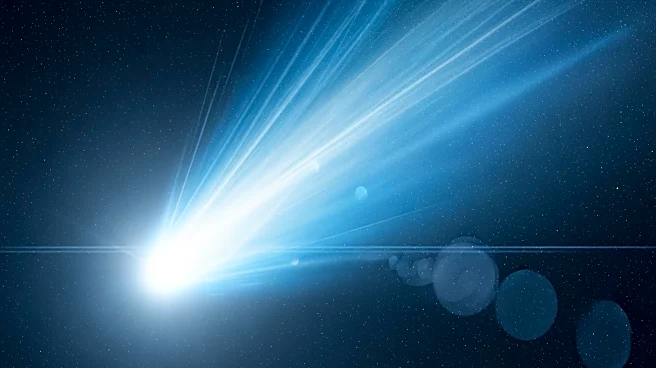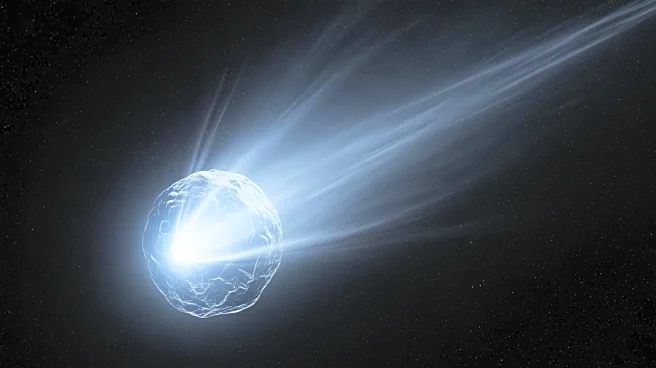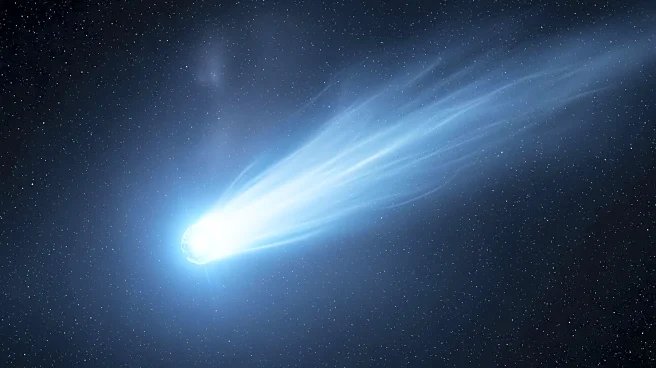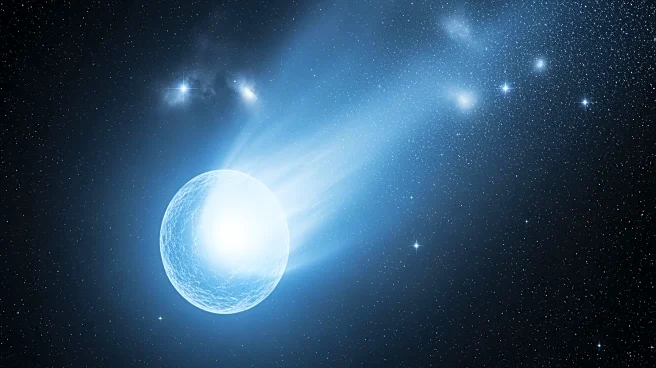What's Happening?
Astronomers have utilized NASA's Imaging X-ray Polarimetry Explorer (IXPE) spacecraft to gain unprecedented insights into the inner region surrounding a white dwarf star in the EX Hydrae system, located
approximately 200 light-years from Earth. This system, classified as an 'intermediate polar,' features a white dwarf that draws material from a companion star, creating a complex pattern of radiation, including X-rays. The Massachusetts Institute of Technology (MIT) team discovered a high degree of polarization among the X-rays, indicating a 2,000-mile-tall column of hot stellar material being pulled from the companion star onto the white dwarf. This discovery challenges previous estimates and confirms the presence of X-rays reflecting off the white dwarf's surface before scattering. The study highlights the effectiveness of X-ray polarimetry in examining extreme stellar environments.
Why It's Important?
The findings from the IXPE spacecraft are significant as they provide a deeper understanding of the accretion processes in intermediate polar systems, which are crucial for studying the final stages of stellar evolution. By confirming the presence of polarized X-rays and the structure of the accretion column, scientists can better predict the behavior of similar systems and their potential to lead to Type Ia supernova explosions. These supernovae are vital for measuring cosmic distances and understanding the universe's expansion. The research also opens new avenues for studying other accreting white dwarfs, enhancing our knowledge of stellar remnants and their impact on galactic ecology.
What's Next?
The research team plans to extend their investigation to other white dwarf systems beyond EX Hydrae. This expansion aims to further explore the environments around vampire stars and improve the understanding of Type Ia supernovae origins. Such studies could provide insights into the lifecycle of galaxies and the universe's structure. The continued use of X-ray polarimetry will likely yield more detailed measurements of accretion geometries in various stellar systems, potentially leading to breakthroughs in astrophysics and cosmology.
Beyond the Headlines
The study of vampire stars and their feeding processes raises intriguing questions about the balance of forces in stellar systems. The interaction between magnetic fields and accretion disks in intermediate polars offers a unique perspective on the dynamics of stellar evolution. Understanding these processes could have implications for the study of magnetic fields in other cosmic phenomena, such as neutron stars and black holes. Additionally, the research contributes to the broader field of X-ray astronomy, showcasing the potential of polarimetry in revealing hidden aspects of the universe.


